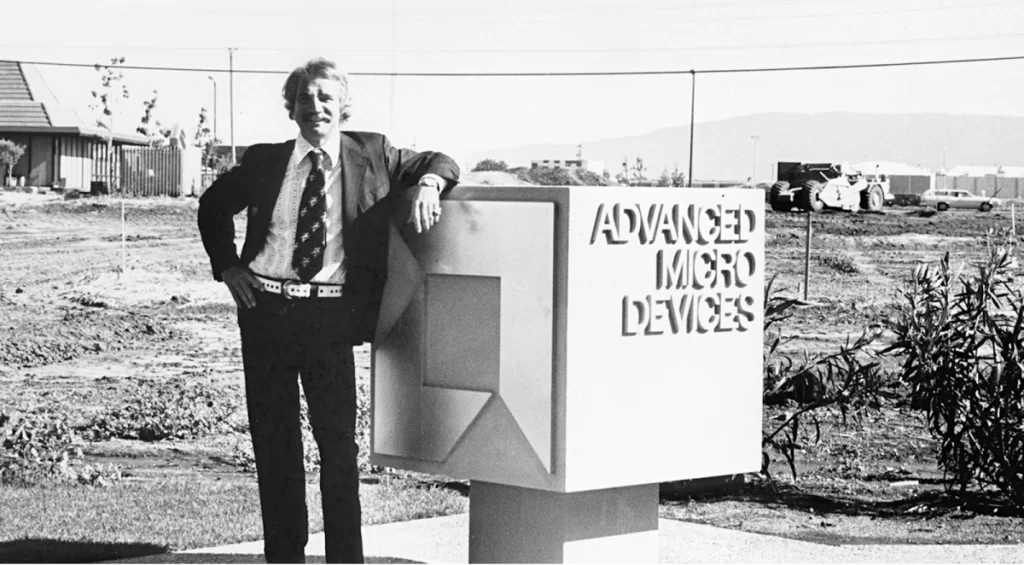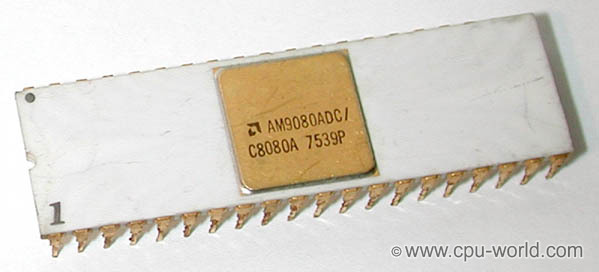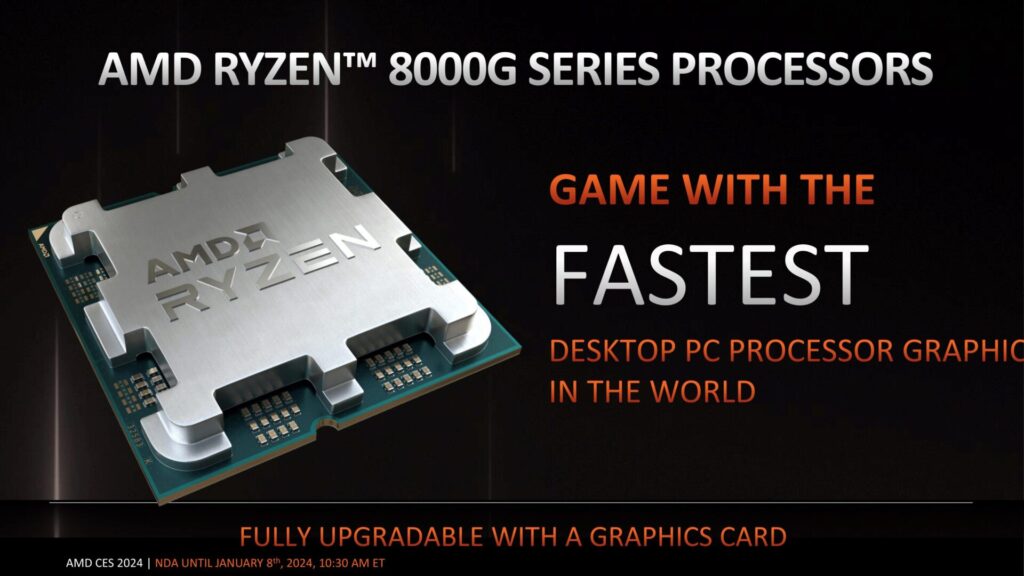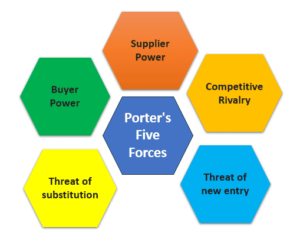For decades, the name Advanced Micro Devices, or AMD, has resonated within the tech industry as a challenger brand in the fiercely competitive world of computer chips. Founded in 1969 by Jerry Sanders and a group of entrepreneurs from Fairchild Semiconductor, AMD entered the scene with a clear mission: to provide high-quality, innovative alternatives to the dominant players in the market. Despite facing periods of intense competition, AMD has emerged as a true industry leader, powering everything from cutting-edge gaming PCs to the world’s most powerful supercomputers. This article will explore AMD’s rich history, its innovative technological advancements, and its ongoing rivalry with Intel that continues to propel the entire chip industry forward.

AMD’s beginnings were humble. The company initially focused on producing memory chips and other logical components, establishing itself as a reliable “second source” supplier for established brands like Intel. This strategy proved successful, allowing AMD to gain a foothold in the market and build a reputation for quality and affordability. A pivotal moment arrived in 1975 when AMD entered the microprocessor arena with its first offering, the Am9080, a reverse-engineered clone of Intel’s 8080 processor. This move ignited a long-standing rivalry that would define the chip industry for decades to come.

Throughout the 1980s and 1990s, AMD and Intel engaged in a fierce battle for market share. Intel, with its established brand and technological prowess, often held the upper hand. However, AMD consistently pushed the boundaries with innovative designs and competitive pricing. One of AMD’s most significant achievements during this period was the introduction of the K5 and K6 processors in the mid-1990s. These processors offered strong performance at attractive prices, chipping away at Intel’s dominance in the desktop PC market.
The early 2000s proved challenging for AMD, with Intel solidifying its lead. However, the company never relented in its pursuit of innovation. A turning point came in 2017 with the launch of the Ryzen processor architecture. This revolutionary design marked a significant leap forward in performance and power efficiency, directly challenging Intel’s offerings. The success of Ryzen, followed by the EPYC server processors, propelled AMD back into the spotlight as a major force in the chip industry.
While central processing units (CPUs) remain a core focus, AMD has strategically expanded its product portfolio. In 2006, the acquisition of graphics processing unit (GPU) giant ATI Technologies marked a significant step. AMD’s Radeon GPUs are now synonymous with high-performance graphics processing, powering everything from casual gaming PCs to high-end workstations. Additionally, AMD has made significant strides in the field of programmable logic devices (FPGAs) with its acquisition of Xilinx in 2020.
Today, AMD stands as a true leader in the chip industry, constantly pushing the boundaries of performance and efficiency. The company’s relentless pursuit of innovation, coupled with its commitment to competitive pricing, ensures a dynamic and exciting future for the entire market. Looking ahead, AMD is poised to play a critical role in shaping the next generation of computing technologies, from artificial intelligence and machine learning to virtual reality and beyond. As the rivalry with Intel continues to drive innovation, consumers can expect even more powerful and versatile computing experiences in the years to come.
What’s new happening around AMD?
Excitement is brewing around AMD as they recently unveiled a wave of new technologies at CES 2024. For desktop PC enthusiasts, the spotlight shone brightly on the introduction of the Ryzen 8000G Series processors. This next-generation lineup boasts the world’s most powerful integrated graphics with the Ryzen 7 8700G leading the charge. Gamers can rejoice, knowing they’ll have access to exceptional performance without the need for a separate graphics card.

Beyond processors, AMD is bringing innovative features to the graphics table as well. Their latest software update, AMD Software: Adrenalin Edition 24.3.1, boasts exciting additions like support for highly anticipated games such as Dragon’s Dogma 2 and Horizon Forbidden West™ Complete Edition. This update also introduces AMD Fluid Motion Frames (AFMF) for existing graphics cards. AFMF is a revolutionary frame generation technology that enhances performance in DirectX 11 and 12 titles on AMD Radeon RX 7000 and 6000 Series cards. By intelligently adding frames where needed, AFMF delivers a smoother gaming experience without sacrificing image quality.
For eco-conscious gamers, AMD has introduced HYPR-RX Eco, a suite of features designed to optimize power consumption. With a single click, users can activate HYPR-RX Eco and enjoy significant power savings while maintaining exceptional gaming experiences. These advancements from AMD demonstrate their continued commitment to pushing the boundaries of performance, efficiency, and innovation for gamers and PC users everywhere.
Target Audience of AMD
AMD strategically caters to a wide audience, encompassing both individual consumers and large-scale businesses. This multifaceted approach allows them to maintain a strong presence across various computing sectors.
At the core of AMD’s consumer base lie tech enthusiasts and gamers. Whether it’s a passionate PC builder meticulously crafting a high-performance machine, a video editor demanding exceptional processing power for demanding projects, or a casual gamer seeking smooth gameplay, AMD offers a compelling proposition. Their Ryzen processors and Radeon graphics cards cater to a range of needs and budgets, making them an attractive choice for value-conscious users who prioritize performance. Furthermore, AMD strategically targets younger demographics, particularly millennials and Gen Z, who are known for their tech-savviness and appreciation for cutting-edge features. By actively engaging these groups and fostering a strong brand identity, AMD ensures a steady stream of future customers who value innovation and affordability.
Marketing Strategies of AMD
Advanced Micro Devices (AMD) has implemented several key marketing strategies to establish itself as a significant player in the semiconductor industry. Here’s a detailed explanation of some of these strategies:
1. Product Differentiation
In the fiercely competitive world of chipmakers, differentiation is key to survival and success. AMD has mastered this art, employing a multi-pronged strategy to set itself apart from the competition.
Price remains a cornerstone of AMD’s differentiation strategy. They consistently offer high-performance processors and graphics cards at a more attractive price point compared to their rivals. This value proposition is particularly appealing to budget-conscious gamers, PC builders, and everyday users seeking powerful computing experiences without breaking the bank. A prime example is their Ryzen processor line. Benchmarks often show comparable performance to competitor offerings, but at a lower cost, making them a compelling choice for those who prioritize value.
Beyond price, AMD prioritizes innovation. They have a history of pioneering new technologies, pushing the boundaries of what’s possible in the chip industry. For instance, AMD became the first company to introduce a 64-bit processor for the consumer market, a significant leap forward in processing power. This commitment to continuous innovation ensures their products remain competitive and cater to the ever-evolving needs of tech enthusiasts and professionals alike.

Building a strong brand reputation is another pillar of AMD’s differentiation strategy. They are known for their dedication to high-quality products and exceptional customer satisfaction. This focus on user experience fosters brand loyalty and trust, encouraging repeat customers and attracting new users seeking reliable and powerful computing solutions. The success of this strategy is evident in AMD’s current market position. They have climbed the ranks to become the second-largest supplier of processors globally, a testament to the effectiveness of their product differentiation approach. This well-positioned company is poised for continued growth and innovation in the ever-changing landscape of the semiconductor industry.
2. Brand Building
Over five decades, AMD has meticulously crafted a brand synonymous with cutting-edge technology and exceptional value. This strong brand identity is a cornerstone of their marketing strategy, fostering trust and loyalty among a vast customer base.
The foundation of AMD’s brand rests on three pillars: innovation, performance, and value. They consistently push the boundaries of chip technology, exemplified by their revolutionary Ryzen and EPYC processors. These high-performance products are trusted by demanding users worldwide, from gamers seeking unparalleled graphical fidelity to professionals tackling complex computing tasks. AMD understands the importance of affordability, and their products consistently deliver exceptional performance at competitive prices. This value proposition resonates with budget-conscious consumers and high-performance enthusiasts alike.
In recent years, AMD has strategically amplified its brand building efforts. Their “together we advance_” campaign powerfully communicates their commitment to collaborative innovation. This message resonates with a tech-savvy generation that values teamwork and pushing the boundaries of what’s possible. Furthermore, AMD has actively leveraged new marketing channels like social media and influencer marketing. By engaging with these platforms, they’ve fostered a stronger emotional connection with their target audience, fostering brand awareness and building a loyal community.
The success of AMD’s brand building strategy is undeniable. They have ascended to the ranks of leading technology brands, with their products impacting millions of users globally. This valuable asset will undoubtedly continue to play a pivotal role in their future success. By staying true to their core principles of innovation, performance, and value, AMD is well-positioned to maintain its position as a trusted leader in the ever-evolving landscape of the technology industry.
3. Channel Partnerships
Channel partnerships are a cornerstone of AMD’s marketing strategy, fostering a powerful network that amplifies their reach and bolsters their success. AMD meticulously categorizes its partners into tiers – Elite, Premier, Provisional Premier, and Select. This structure ensures partners with a proven track record and commitment receive significant benefits. These top-tier partners enjoy increased discounts, comprehensive marketing support, and dedicated technical assistance, empowering them to become AMD’s strongest advocates.
The value proposition of channel partnerships is mutually beneficial. AMD leverages this network to reach a wider audience and significantly boost product sales. Partners, in turn, benefit from a range of resources and support designed to maximize their success. Financial incentives like rebates and marketing support funds provide a direct financial advantage. Additionally, AMD equips partners with in-depth product and marketing training, ensuring they possess the necessary expertise to effectively promote AMD’s offerings.
Technical support plays a crucial role in this partnership. AMD offers dedicated support channels to assist partners in troubleshooting any issues related to their products. This not only empowers partners but also strengthens customer satisfaction by ensuring prompt and efficient problem resolution. Beyond technical support, AMD provides valuable tools like lead generation programs to help partners identify potential customers and accelerate their sales cycle.
AMD’s commitment extends to deal registration programs that track partner sales and reward them accordingly. This incentivizes performance and fosters a results-oriented environment. Notably, AMD recognizes the importance of staying ahead of the curve. Elite partners are granted early access to cutting-edge AMD technologies. This allows them to be the first to introduce these advancements to their customer base, solidifying their position as industry leaders. Furthermore, AMD fosters collaboration through joint marketing and co-branding initiatives. These programs present a united front, amplifying brand awareness and driving sales for both AMD and its partners.
4. Investment in Research and Development
In the fiercely competitive world of chipmakers, relentless innovation is paramount for survival and market leadership. AMD understands this critical truth, and investment in research and development (R&D) is a cornerstone of their marketing strategy. Their unwavering commitment to pushing technological boundaries is a key driver of their success in high-performance computing, graphics, and visualization technologies.
The numbers speak for themselves. In 2023, AMD dedicated a staggering $5.8 billion to R&D, marking their highest single-year investment ever. This strategic financial commitment is fueled by several factors. The ever-growing demand for high-performance computing in fields like artificial intelligence, machine learning, and data analytics necessitates continuous innovation. Additionally, AMD is actively exploring and investing in groundbreaking technologies like 5G and the Internet of Things (IoT), ensuring they remain at the forefront of the industry.

The positive impact of AMD’s R&D focus is undeniable. Their recent product launches have been met with market acclaim. This includes the powerful Ryzen 7000 series processors, the visually stunning Radeon RX 7000 graphics cards, and the enterprise-grade EPYC Genoa server processors. The pipeline for future innovation remains robust, with the highly anticipated Ryzen 9000 series processors, Radeon RX 8000 graphics cards, and EPYC Bergamo server processors on the horizon.
By prioritizing R&D, AMD not only stays at the forefront of technological advancements but also strategically positions itself to capitalize on future market trends. Their investments in specific areas like High-Performance Computing (HPC), graphics, Artificial Intelligence (AI), Machine Learning (ML), and Data Analytics all cater to the evolving needs of various industries. AMD’s dedication to R&D ensures they not only deliver exceptional products today but are also well-equipped to tackle the technological challenges of tomorrow. This unwavering commitment to innovation strengthens their market position and fosters trust among their customers, solidifying their reputation as a leader in the ever-evolving world of semiconductors.
5. Community Engagement
AMD actively fosters a culture of giving back through employee-driven initiatives. AMD and the AMD Foundation award grants to non-profit organizations based on employee recommendations, local needs, and strategic fit with the company’s goals. This collaborative approach empowers employees and strengthens AMD’s connection to the communities it serves. Additionally, AMD employees, known as the AMD Community Corps, volunteer their time, further solidifying the company’s commitment to social responsibility.
AMD’s community engagement extends beyond financial contributions. The company partners with organizations to cultivate future talent in science and engineering fields. This commitment ensures a skilled workforce for the technology industry and positions AMD as a leader in innovation. Furthermore, AMD prioritizes sustainable practices by collaborating with organizations like the Akshaya Patra Foundation to implement eco-friendly solutions.
Diversity and inclusion are central to AMD’s community engagement strategy. The company aims to have a significant portion of its workforce actively involved in employee resource groups and inclusion initiatives by 2025. This focus on creating a welcoming and diverse environment not only strengthens company culture but also broadens AMD’s appeal to a wider talent pool. By demonstrating its commitment to social responsibility across various aspects, AMD builds positive brand recognition and fosters long-term customer loyalty.
Overall, these marketing strategies enable AMD to effectively promote its products, build brand awareness, and drive demand in the highly competitive semiconductor market. By focusing on product differentiation, targeted marketing, brand building, channel partnerships, content marketing, community engagement, influencer marketing, and research and development, AMD positions itself for long-term success and growth.
SWOT Analysis of AMD
This analysis delves deeper into the Strengths, Weaknesses, Opportunities, and Threats (SWOT) that impact Advanced Micro Devices (AMD).

Strengths
Technology Leadership: AMD boasts a history of industry firsts, like the 64-bit and dual-core processors. This innovative spirit positions them at the forefront of technological advancements.
Strong Product Portfolio: AMD offers a diverse range of products catering to different user needs. CPUs, GPUs, and APUs (combined CPU and GPU) provide a comprehensive solution for various computing tasks.
Partnerships with Major Companies: Strategic partnerships with other tech giants enhance AMD’s reach and influence within the industry. These collaborations can lead to joint product development and market expansion.
Increased Market Share: AMD has made significant strides in capturing market share in the CPU and GPU sectors, primarily due to their competitive product offerings. This growth momentum bodes well for their future.
Skilled Leadership: Under Dr. Lisa Su’s guidance, AMD has witnessed remarkable progress in financial performance and product innovation. Her leadership plays a crucial role in steering the company forward.
Strong Research and Development (R&D): AMD prioritizes R&D, ensuring a steady stream of innovative technologies. This focus on pushing boundaries keeps them ahead of the curve.
Weaknesses
Brand Recognition: Compared to its primary competitor, Intel, AMD faces a challenge in brand recognition. Consumers might be more familiar with Intel, potentially impacting purchase decisions.
Enterprise Adoption: While gaining traction in the consumer market, AMD’s products haven’t achieved the same level of widespread adoption within large enterprises as Intel’s offerings. This limits their market reach.
Inventory and Volatility Risks: AMD’s reliance on a limited number of suppliers exposes them to inventory risks and potential price fluctuations. Disruptions within the supply chain can significantly impact their operations.
Opportunities
Cloud Computing: The burgeoning cloud computing market presents a significant growth opportunity for AMD. Their well-suited processors can power cloud-based applications, driving further market share gains.
Edge Devices: The increasing demand for edge devices, like smart devices and internet-of-things (IoT) gadgets, creates another growth avenue. AMD’s products are well-positioned to cater to the processing needs of these devices.
Emerging Workloads: Artificial intelligence (AI) and machine learning (ML) are rapidly evolving fields. AMD has the potential to capitalize on this growth by developing processors optimized for these demanding workloads.
Threats
Competition from Intel: Intel remains AMD’s primary competitor, boasting a stronger brand image and a wider product portfolio. This competitive landscape puts pressure on AMD to continuously innovate and differentiate itself.
Economic Downturn: A global economic downturn can lead to decreased consumer spending, impacting the demand for AMD’s products. Economic fluctuations pose a significant threat to their revenue streams.
Changes in Technology: The fast-paced technological landscape can be a double-edged sword. While AMD thrives on innovation, rapid technological advancements can quickly render existing products obsolete. Adapting to these changes effectively is crucial for their long-term success.
By leveraging its strengths and addressing its weaknesses, AMD can capitalize on the vast opportunities presented by the evolving technological landscape. Staying ahead of the competition in a dynamic market and mitigating potential threats will be crucial for AMD to solidify its position as a leading innovator in the tech industry.
Porter’s Five Forces of AMD
Understanding the competitive environment is vital for any company’s success. Here’s a breakdown of AMD’s industry using Porter’s Five Forces framework:

1. Threat of New Entrants (Moderate)
High Barriers to Entry: The semiconductor industry requires substantial investments in research and development (R&D), advanced manufacturing facilities, and intellectual property (IP). These high barriers deter new players from entering the market easily.
Brand Recognition and Existing Relationships: Established players like AMD and Intel have strong brand recognition and well-established relationships with manufacturers and distributors. This makes it challenging for new entrants to gain market share.
2. Bargaining Power of Suppliers (Moderate to High)
Limited Number of Suppliers: The semiconductor industry relies on a limited number of specialized foundries to manufacture chips. This gives these foundries significant bargaining power when negotiating prices and production capacity.
Shifting Power Dynamics: However, with increasing demand and competition, chip foundries are expanding their production capabilities. This could gradually shift the bargaining power in favor of companies like AMD over time.
3. Bargaining Power of Buyers (Moderate)
Large PC Manufacturers: Large PC manufacturers like Dell, HP, and Lenovo have some bargaining power due to their high purchase volumes. They can negotiate for lower prices or favorable payment terms with chipmakers like AMD.
Diversification of Customer Base: AMD is increasingly focusing on selling directly to consumers and cloud service providers. This diversification reduces dependence on any single buyer and weakens their bargaining power.
4. Threat of Substitutes (Low)
Limited Viable Alternatives: For specific computing needs, there are currently no viable substitutes for CPUs and GPUs. While alternative architectures like ARM processors exist, they are not always suitable replacements for AMD’s x86 processors in all applications.
5. Competitive Rivalry (High)
Dominant Player: Intel remains the leading player in the CPU market, with a larger market share and brand recognition. This intense competition compels AMD to continuously innovate and offer competitive pricing to gain market share.
Emerging Players: The emergence of other chipmakers like Nvidia, especially in the GPU market, adds to the competitive landscape. This pressure forces AMD to differentiate itself through product features and performance.
Overall, the competitive landscape for AMD presents both challenges and opportunities. While the threat of new entrants is moderate, bargaining power lies somewhat with suppliers. Customers have moderate bargaining power due to diversification in AMD’s customer base. The low threat of substitutes provides some stability, but intense competition with established and emerging players remains a key challenge. By focusing on technological innovation, strategic partnerships, and cost-effective production, AMD can navigate this competitive environment and solidify its position in the semiconductor industry.
Success Factors of AMD
Here’s a breakdown of some key factors that have contributed to AMD’s success:
Product Innovation and Performance:
Strong CPU and GPU Performance: AMD’s Ryzen and EPYC processors along with Radeon graphics cards have consistently delivered high performance at competitive prices. This focus on balanced performance across single-core and multi-core tasks makes them attractive for gamers, professionals, and data centers alike.
Focus on Cutting-edge Technology: AMD has continuously invested in research and development, resulting in innovative architectures like Zen which power their CPUs. This commitment to pushing the technological envelope keeps them competitive and allows them to introduce new features that enhance user experience.
Shifting Market Perception:
Customer-Centric Approach: AMD has moved from a product-centric approach to a more audience-centric one. They focus on understanding customer needs and tailor their marketing and product development to better serve those needs. This has helped them build a stronger brand identity and establish themselves as a leader in performance and technology.
Building Brand Equity: Through strategic marketing campaigns and product launches, AMD has worked on establishing itself as a trusted brand. This focus on brand building positions them as a serious contender to rival Intel in the chip market.
Other factors:
Strategic Acquisitions: AMD’s acquisition of companies like Xilinx and Pensando has expanded their product portfolio and opened doors to new markets like data center solutions and programmable chips.
By focusing on these areas, AMD has been able to not only compete effectively with Intel but also carve out a strong position for itself in the ever-evolving chip market.
Also Read: A Deep Dive into the Marketing Strategy of NVIDIA
Also Read: Marketing Strategies, Marketing Mix and STP of Intel
To read more content like this, subscribe to our newsletter
[wpforms id=”320″]


